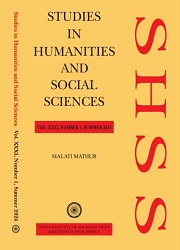Mandala/Rajamandala Theory and the Theory of Interstate Relations
Does it Reflect the Modern Approaches and Strategies to War, Peace and Diplomacy?
Keywords:
Mandala, Sadgunya, Upayas, Prakashyuddha, Kutayuddha, Asuryuddha, Relative Power, National PowerAbstract
Kautilya was the first political thinker of ancient India who argued the importance of sovereignty, both internal and external, because it is sovereignty which defines, among others, the State. No rashtra can make progress until it is free to pursue its policies independently of others. The mandala theory is also influenced by the concerns of external relations and conquest for sovereignty without which the internal freedom to frame policies and take decisions would be unimaginable. This paper is an attempt to examine Kautilyan strategic thought and interstate relations in its entirety in the sense that it seeks to first understand and critically examine Kautilyan concept of mandala with reference to its contents, constituents, validity and efficacy as a theory of peace and war; Secondly, its purpose is to analyse Kautilya’s approach to diplomacy with reference to Sadgunya theory (six principles of diplomacy and foreign relations) and the strategy of our Upayas and their importance in the conduct of interstate relations.Downloads
Downloads
Published
2022-03-21
How to Cite
Sharma, R. . (2022). Mandala/Rajamandala Theory and the Theory of Interstate Relations: Does it Reflect the Modern Approaches and Strategies to War, Peace and Diplomacy?. Studies in Humanities and Social Sciences (SH&Amp;SS), 26(2). Retrieved from http://14.139.58.200/ojs/index.php/shss/article/view/1352
Issue
Section
Articles



